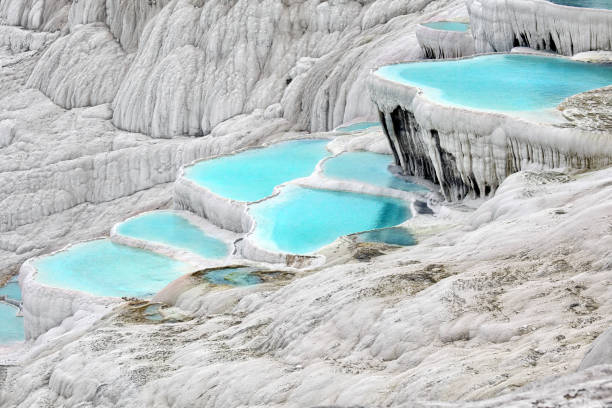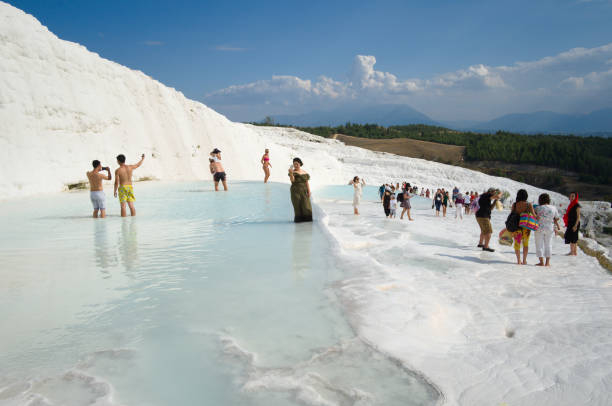Pamukkale
Pamukkale, which translates as "cotton castle" in Turkish, is a natural feature in the Turkish province of Denizli in southern Turkey. The region is well-known for a carbonate mineral formed by the passage of thermal spring water. It is situated in Turkey's Inner Aegean area, in the valley of the river Menderes, which enjoys a moderate climate for most of the year. The ancient Greek city of Hierapolis was built on top of a travertine formation that is approximately 2,700 meters long, 600 meters broad, and 160 meters high. It may be viewed from the hills on the opposite side of the valley at Denizli, which is 20 kilometers distant. This region has drawn travelers to its hot springs since classical antiquity.
The Turkish name relates to the sparkling, snow-white limestone surface, which has been formed over millennia by calcite-rich springs. Mineral-rich fluids drip gently down the slope, collecting in and cascading down the mineral terraces into pools below. Along with Hierapolis, it was designated a UNESCO World Heritage Site in 1988. It is situated in Turkey's Inner Aegean area, in the valley of the river Menderes, which enjoys a moderate climate for most of the year. Tourism is and has always been a significant sector. For thousands of years, people have bathed in its waters.
Detailed information:
Location: Turkey
Official name: Hierapolis-Pamukkale
Website: https://www.pamukkale-turkey.com











